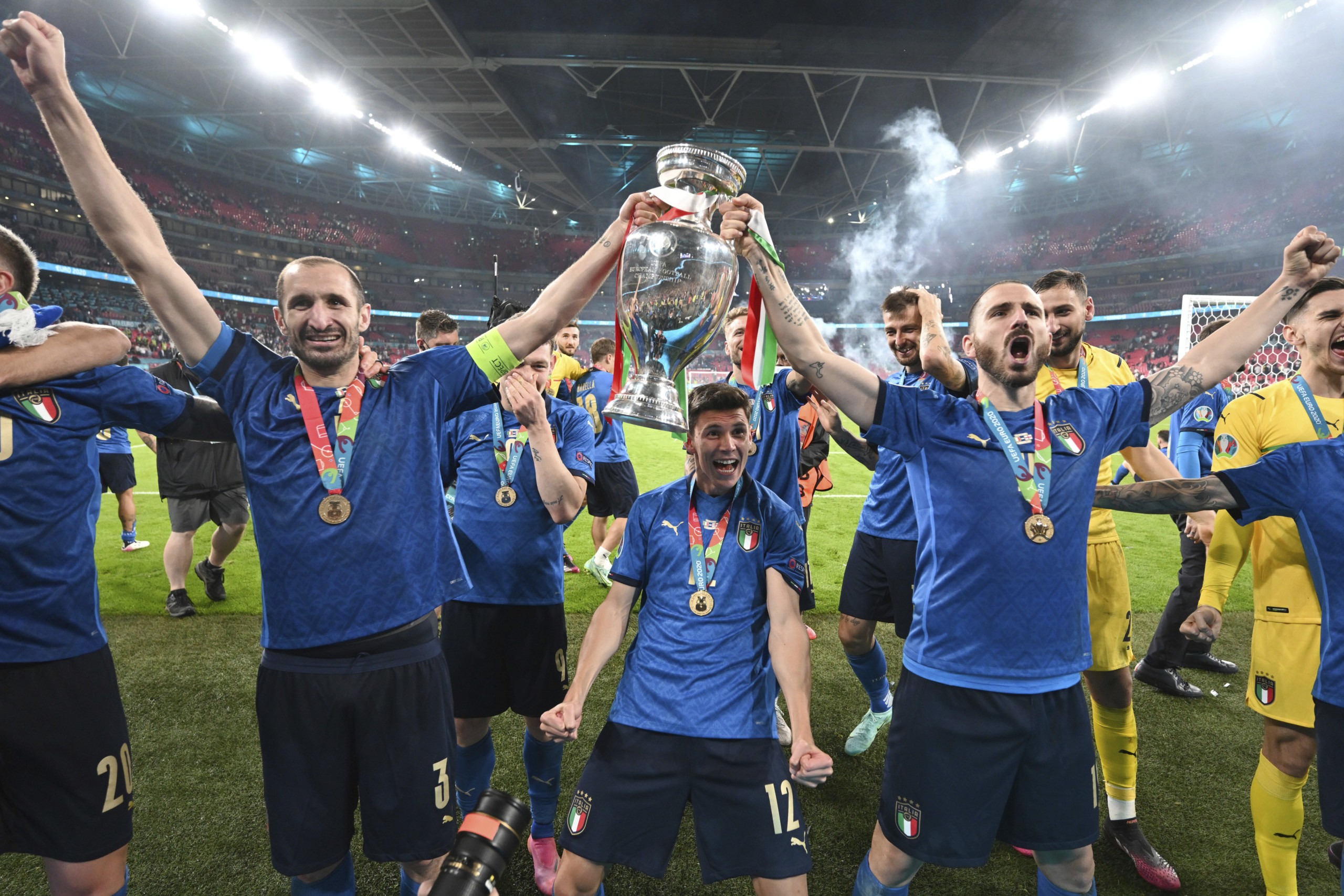On Sunday, Italy secured their second European Championship title, seeing off England on home turf to take football back to Rome.
Helped by using the best event data in football (wink, wink), the Azzurri's early performances promised much and they were identified as potential champions-elect. A promise they delivered on on Sunday evening.
Catenaccio translates as “door-bolt” or “lockdown”. The stereotypical Italian approach is akin to bunkering down behind castle walls; Roberto Mancini has instilled a process akin to sending the guard dogs to pursue intruders at the edge of the grounds.
A comprehensive 3-0 win in their opening match against Turkey contained all the imprints of their current tactical identity: an energetic pressing game and fluid combination play, resulting in a victory that resonated among both Azzurri supporters and neutrals alike.
The defending from the front saw Italy record 161 pressures, including 49 counterpressures, in the tournament’s curtain-raiser.
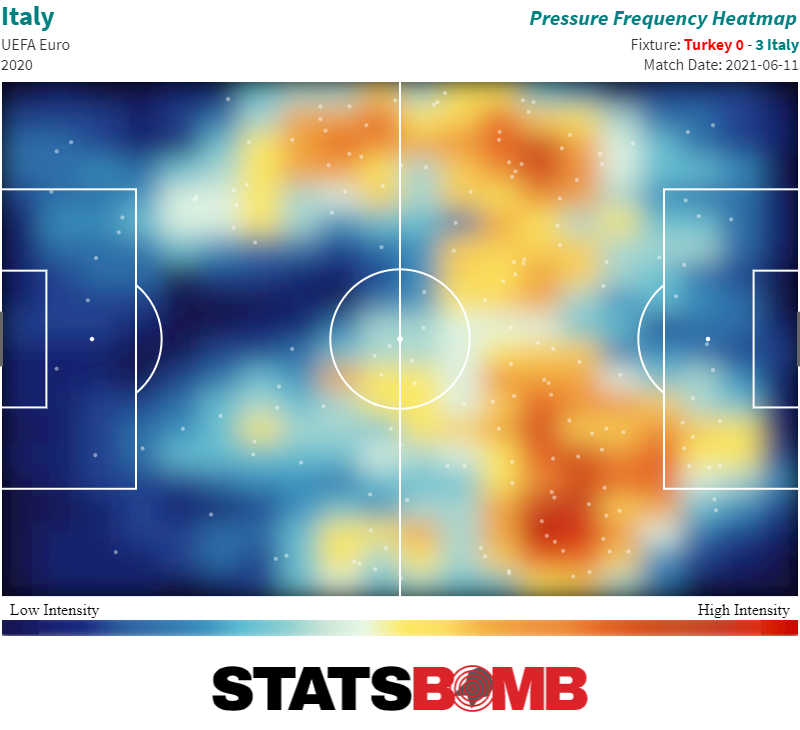
Many onlookers judged it to be a pretty turgid display from Turkey, but Italy still dominated them. They rained 14 shots on Turkey’s goal to none in response in a goalless first half, before a further ten shots to Turkey’s one in the second half saw Italy secure their 3-0 win. Turkey added two attempts in second-half injury time to bring their total to three, enough to prevent them from the lowest shots total in a single match across the tournament.
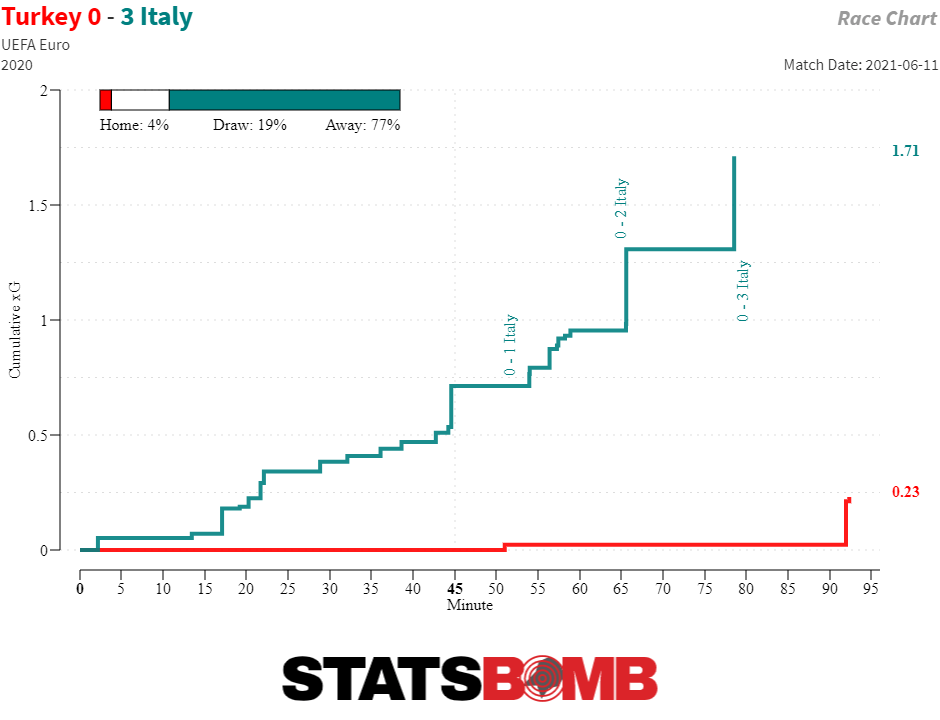
They followed it up with another controlled and complete display against Switzerland to secure qualification from Group A with minimum fuss. Neither Turkey nor the Swiss were in the conversation to go far in the tournament, but the manner of the displays – creating 1.71xG and 1.84xG respectively while conceding next to nothing in defence in either game - cemented the belief that Italy could be a potential winner of the competition.
As did the evident depth of the squad available. It’s not every day that the star performer in midfield in the opening two group games goes on to play a select few minutes off the bench in the remainder of the tournament, but that’s what happened with Manuel Locatelli.
Locatelli combined with the superb left-flank duo of Insigne and Leonardo Spinazzola, covering for them defensively while also breaking forward and contributing two goals in the victory over Switzerland, his already soaring reputation given further jet fuel. An ominous sign to the other contenders then that Marco Verratti – inarguably one of the best players in the world in that position – was to come back in to replace the unfortunate Locatelli.
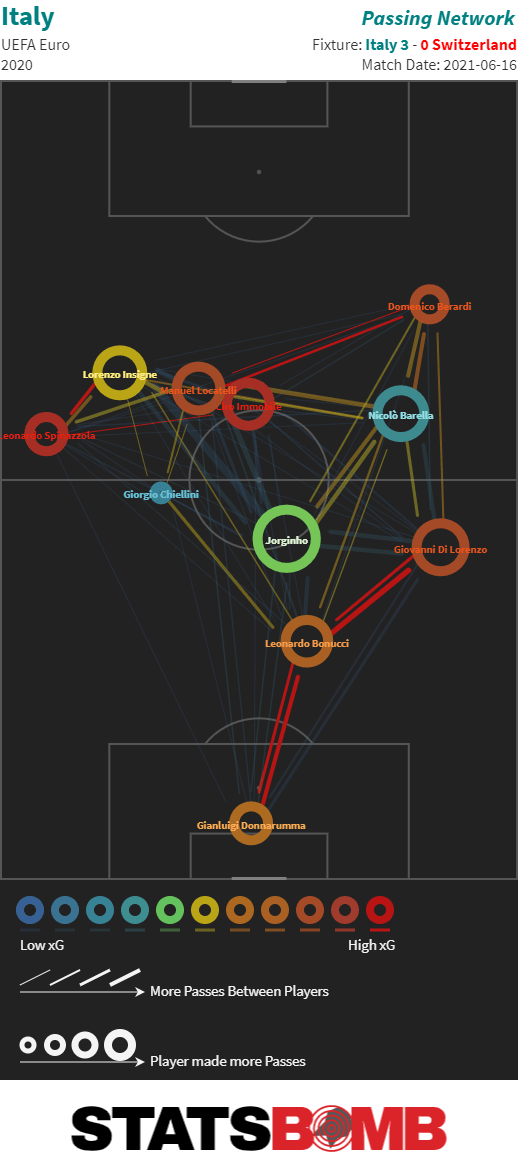
Already qualified, Italy beat Wales with the same level of dominance as the previous two fixtures, despite no fewer than eight changes to the XI. This time it was 23 shots to 3. But it also revealed another arrow in the Azzurri quiver.
Gianni Vio, hailed as one of the original set-piece masterminds, was part of the Italy setup during the tournament to provide analysis and an edge to the Azzurri’s set-piece playbook. A routine straight out of the Vio bible secured the win over Wales early in the second half, having put them to the sword in the first without scoring.
Matteo Pessina’s controlled finish from Verratti’s delivery was made possible by the distractions offered by Alessandro Bastoni and Bonucci. Both stood offside at the far post before the delivery, and Federico Bernadeschi’s decoy run on the outside of the wall meant Pessina could ghost in front of the Welsh defence to sweep the low delivery into the far corner.
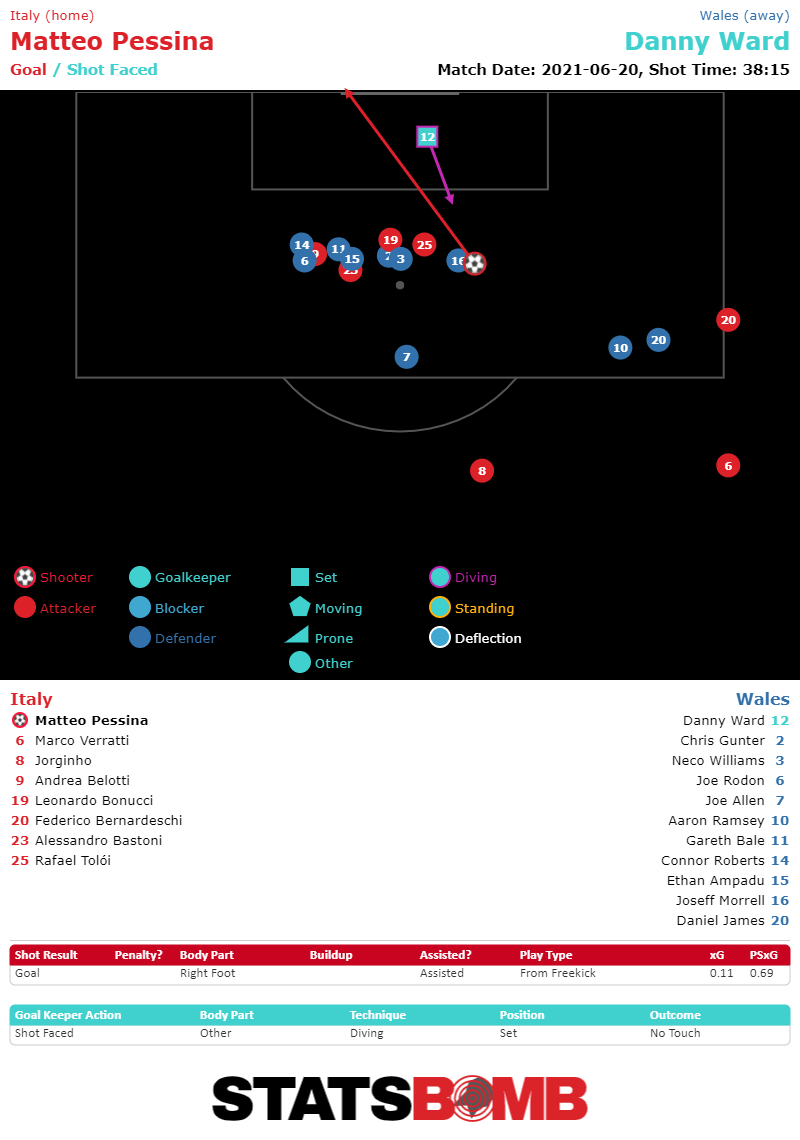
Three goals were enough for Italy to end Euro 2020 as joint-top goal scorers from set-pieces - albeit Croatia and Spain played fewer games - but Vio’s influence was another factor that provided a crucial extra edge to the Italian sword. Something that proved vital once again much later in the tournament.

The Azzurri cruised through the group stages with three consecutive wins-to-nil and seven goals scored, but their most challenging match yet came in the Round Of 16.
Austria’s goal had to withstand 18 Italian shots in normal time, but Italy took 14 of those shots from further than 12 yards out, and only two of the 18 found the target. Mancini’s men were struggling to lay a glove on Austria, and they were nearly sucker-punched when Marko Arnautovic netted in the second half, only for VAR to rule the goal offside.
The breakthrough came through Federico Chiesa in extra time, assisted by a searching Leonardo Spinazzola pass. Spinazzola’s influence and role in the Italy team was one of the most enjoyable aspects of the 2020 edition of the tournament; the wingback was undoubtedly one of the players of the tournament before his injury in the quarter-final versus Belgium.
The Roma wingback provided width and depth on the left flank and dovetailed with Lorenzo Insigne moving inside. Spinazzola’s dangerous running out wide carried the Azzurri up the pitch and lead to numerous goalscoring opportunities. Spinazzola made the most progressive carries per 90 in the whole tournament – carries that moved the ball at least 25% closer to the opposition goal.
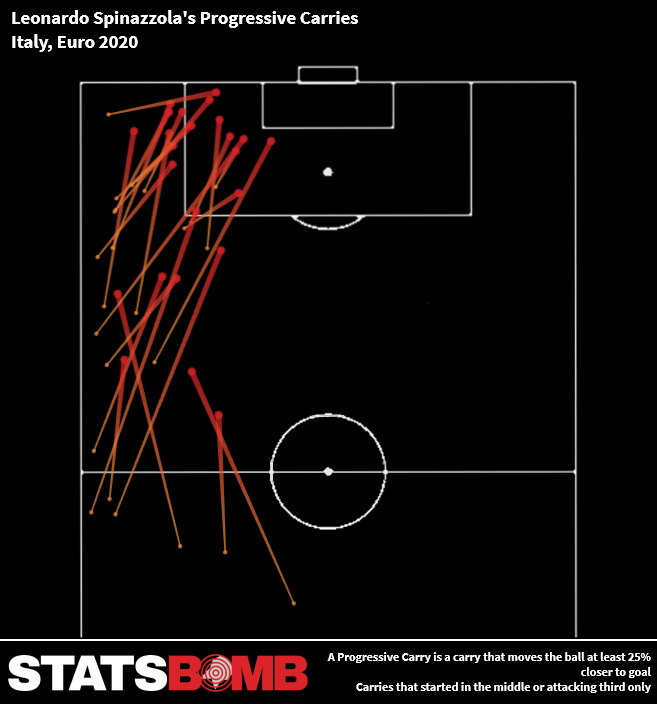
Italy’s aggressive pressing approach was evident during their opening goal in the 2-1 quarter-final victory over Belgium. Belgium turned the ball over following an Italian freekick, but the Azzurri counterpressed as effectively as they had done all tournament, Verratti winning the ball back 20 yards out and feeding Barella to turn and finish explosively past Thibaut Courtois.
The loss of Spinazzola in the second half was offset by the return of Giorgio Chiellini, who'd missed nearly two games after being subbed off injured against Switzerland.
His performances next to fellow Old Lady Leonardo Bonucci during the tournament were vintage, giving the technically gifted and defensively proactive Italian side a steer when seas were rough. The Juventus stalwart celebrates defensive blocks as if he’s just saved humanity from a hurtling meteorite.
Chiellini and Bonucci repelled opposition attacks throughout the competition, barking instructions at the team around them to remain organised. At 36 years old and on the back of a recent cruciate rupture, Chiellini was hardly in prime mobility and could’ve been exposed when playing in a higher defensive line. Spinazzola’s speed next to him provided cover, but the centre-back also adapted well, winning duels near the halfway line to turn the ball over and continue the wave of Italian attacks while defending the penalty box with all the nous that a 21-year top-level career gives you.
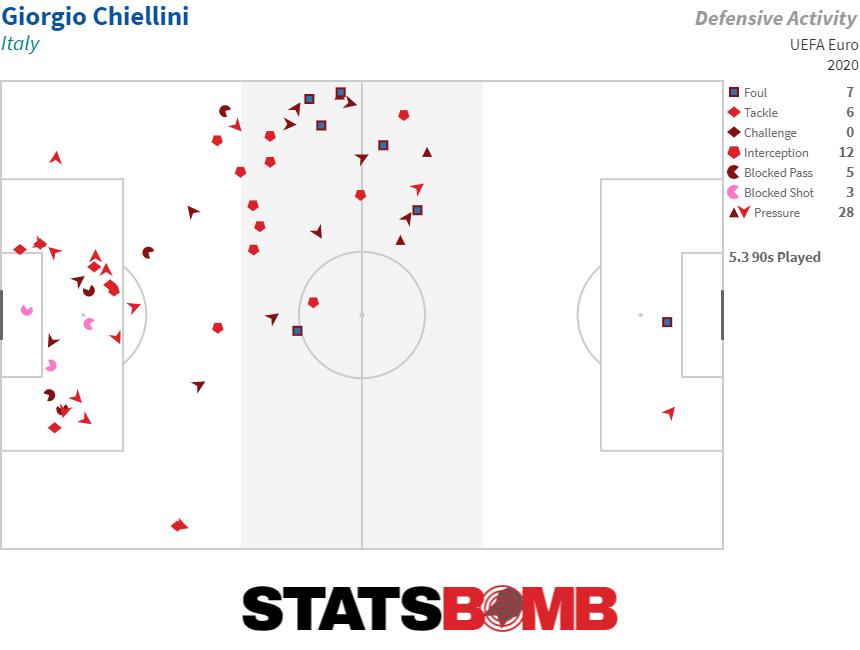
Chiellini finished the Euros with the 3rd-most possession-adjusted clearances per 90 amongst centre-backs and was also one of five central defenders not to be dribbled past in the entire tournament. Watchers of the final will know the lengths he went to to stop Bukayo Saka from blotting that record.
The semi-final against Spain saw Italy struggle for the first time. The two teams had been the standout footballing sides at the tournament, but with Bonucci and Chiellini, two of the world’s best duellers, Spain opted to deny them anyone to duel with. Dani Olmo started in a false-nine position - it was effective: Spain dominated possession in the first half, and Italy struggled to get out of their territory.
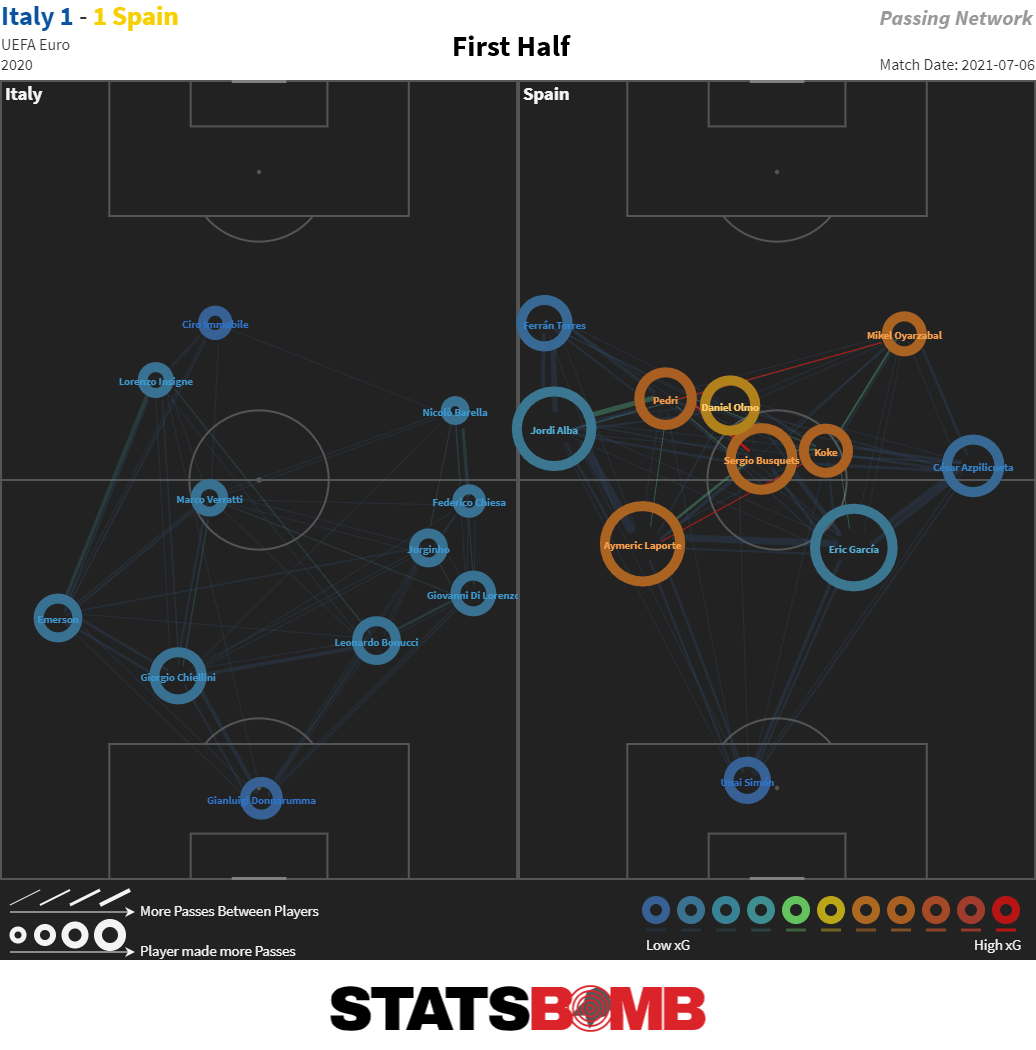
Federico Chiesa, having already displaced Domenico Berardi and scoring the opener in extra-time against Austria, made another pivotal contribution to Italy’s Euros win when his unerring, whipped finish put them ahead in the semi-final.
Chiesa’s ability to carry the ball and create decisive moments had delivered for Italy again. Across the whole tournament, not only was he second to Spinazzola for progressive carries per 90 – carries that progressed the ball 25% closer to goal -, he also topped the tree for carries that preceded shots or key passes, with 2.4 carries leading to shots or key passes per 90. Chiesa can drive with the ball in the attacking third, but he can also create an end product at the end of it as well.
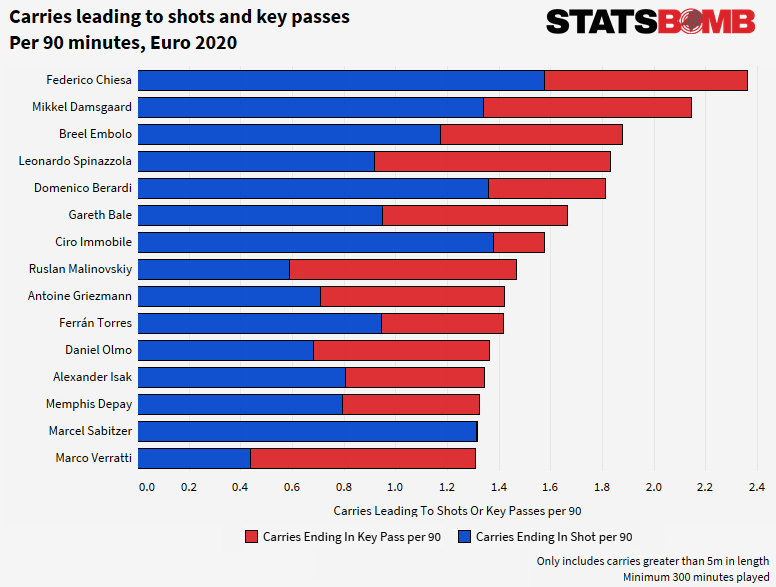
Alvaro Morata’s equaliser for Spain ensured the game went all the way through to penalties where Gianluigi Donnarumma saved the deciding penalty from Morata to send Italy to another European Championship final.
And so to the final.
It could hardly have gotten off to a worse start. 117 seconds was all it took for Luke Shaw to blow the Wembley stadium roof off, a shockwave that initially blew the Good Ship Italia off course as well.
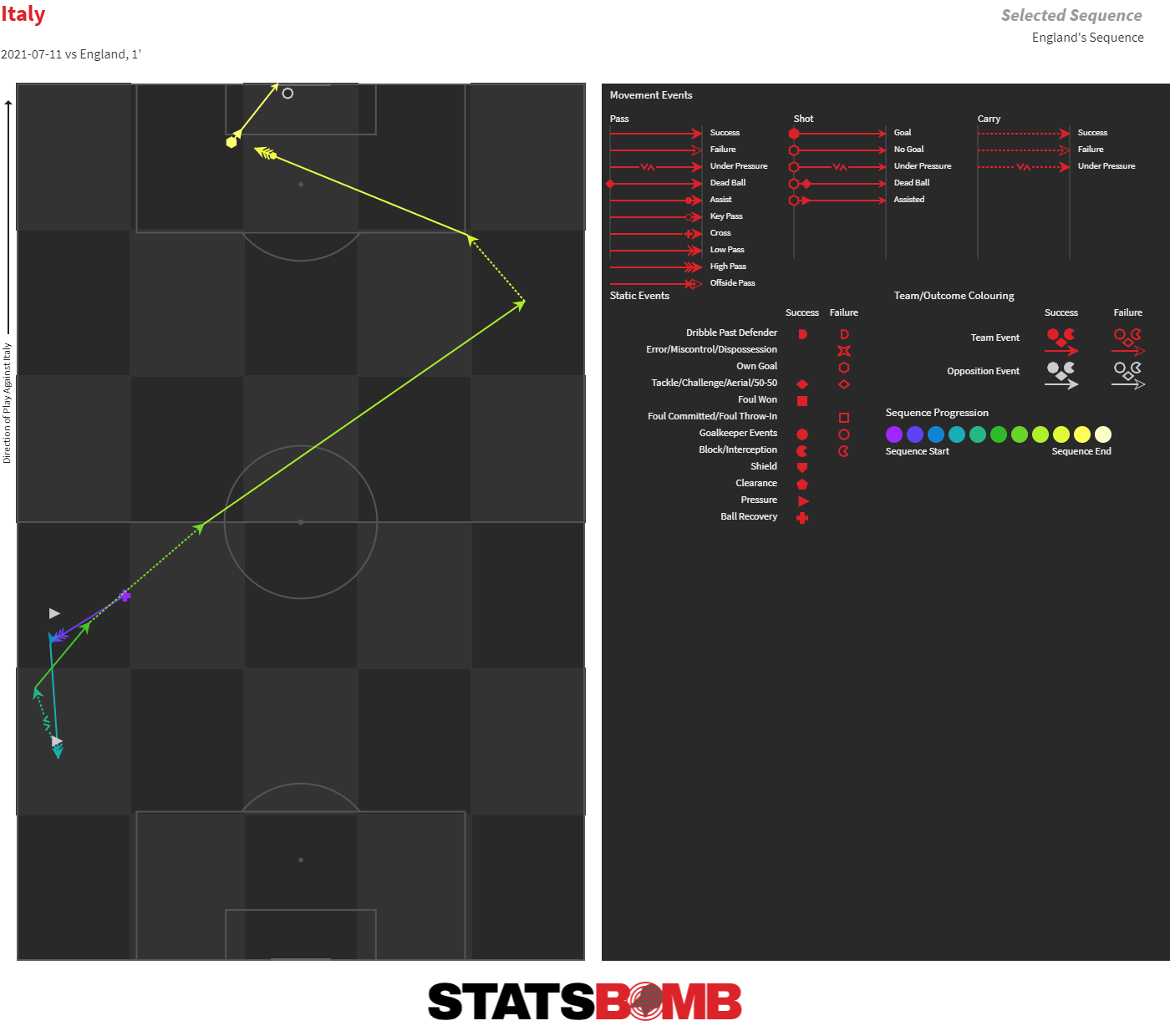
Italy struggled to make an impact on the game in the first 45. Harry Kane was dropping deep into areas that Dani Olmo had effectively occupied for Spain in the semi-final. It was up to Mister Mancini to adjust the sails at half-time and send Italy cruising back into the game.
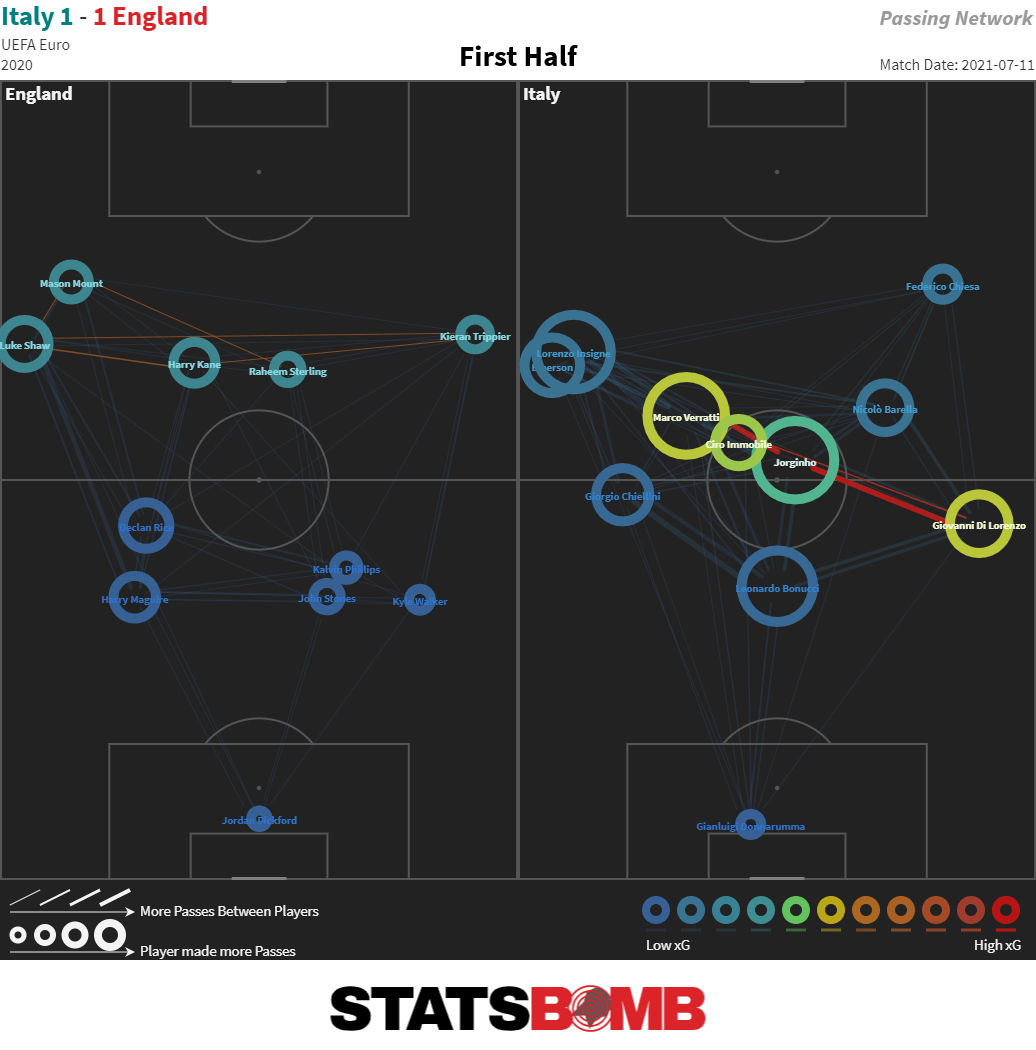
Early in the second half, Mancini substituted Immobile for Domenico Berardi, and Italy began to operate without a traditional centre-forward. Insigne moved to the middle but drifted side-to-side to create overloads on the wings as the Azzurri got to work breaking down the deep defence as they started to force England back.
Italy continued to create opportunities, but it was another Vio set-piece that made all the difference. Jordan Pickford saved Verratti’s initial header from the corner’s near-post flick-on, but Bonucci was there to tap in and bring the final back on level terms. The Italian turnaround in scoreline and momentum meant there was only likely to be one winner in normal or extra-time. England were unable to create a single shot from open play after Shaw’s opener. Their remaining five efforts came from set-pieces and were dwarfed by Italy’s 19.
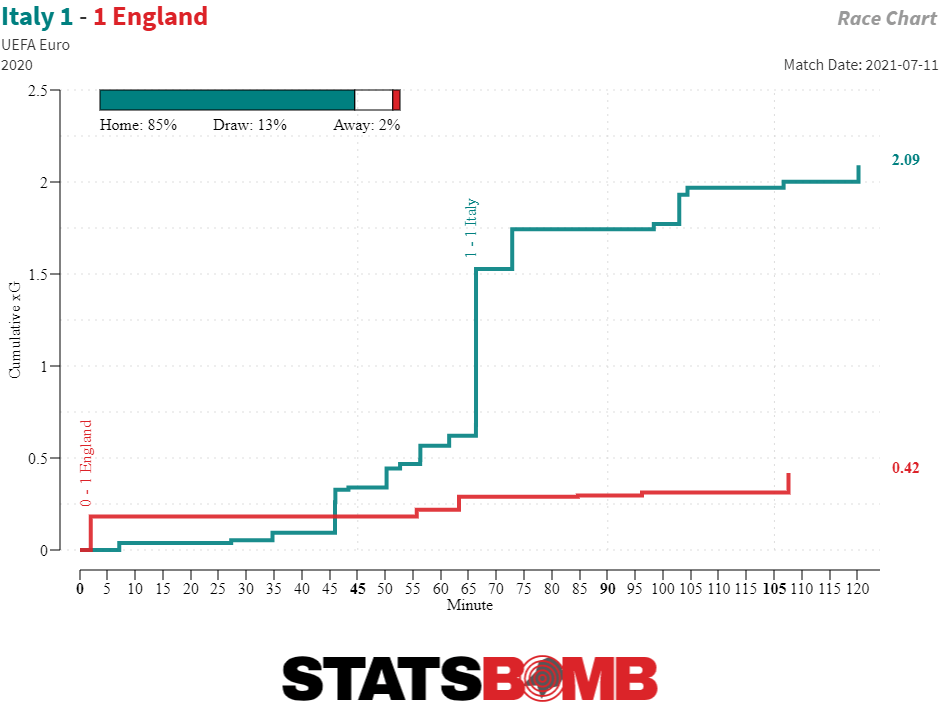
So it came to penalties. Again.
Misses from Andrea Belotti and Jorginho proved not to be costly as Donnarumma performed heroics to save from Jadon Sancho and Bukayo Saka to secure another international championship for Italy. The cynics refused to buy the early tournament hype. Their group stage opponents were weak, they said. Well, the Azzurri defeated Belgium, Spain, and then England to lift the trophy. A victory that, on balance, feels just.
StatsBomb provided analytics, data, and insight to three team federations at the Euro 2020 tournament, including the champions Italy. If you'd like to find out how using StatsBomb can take your analysis to the next level, get in touch today.
